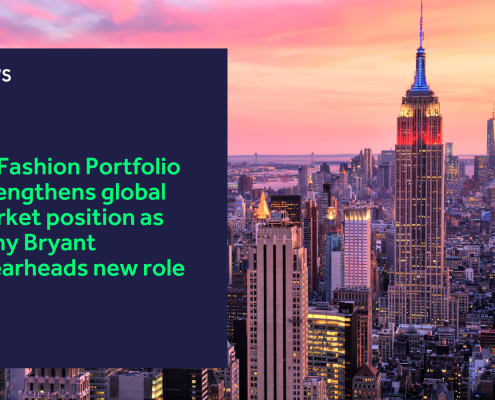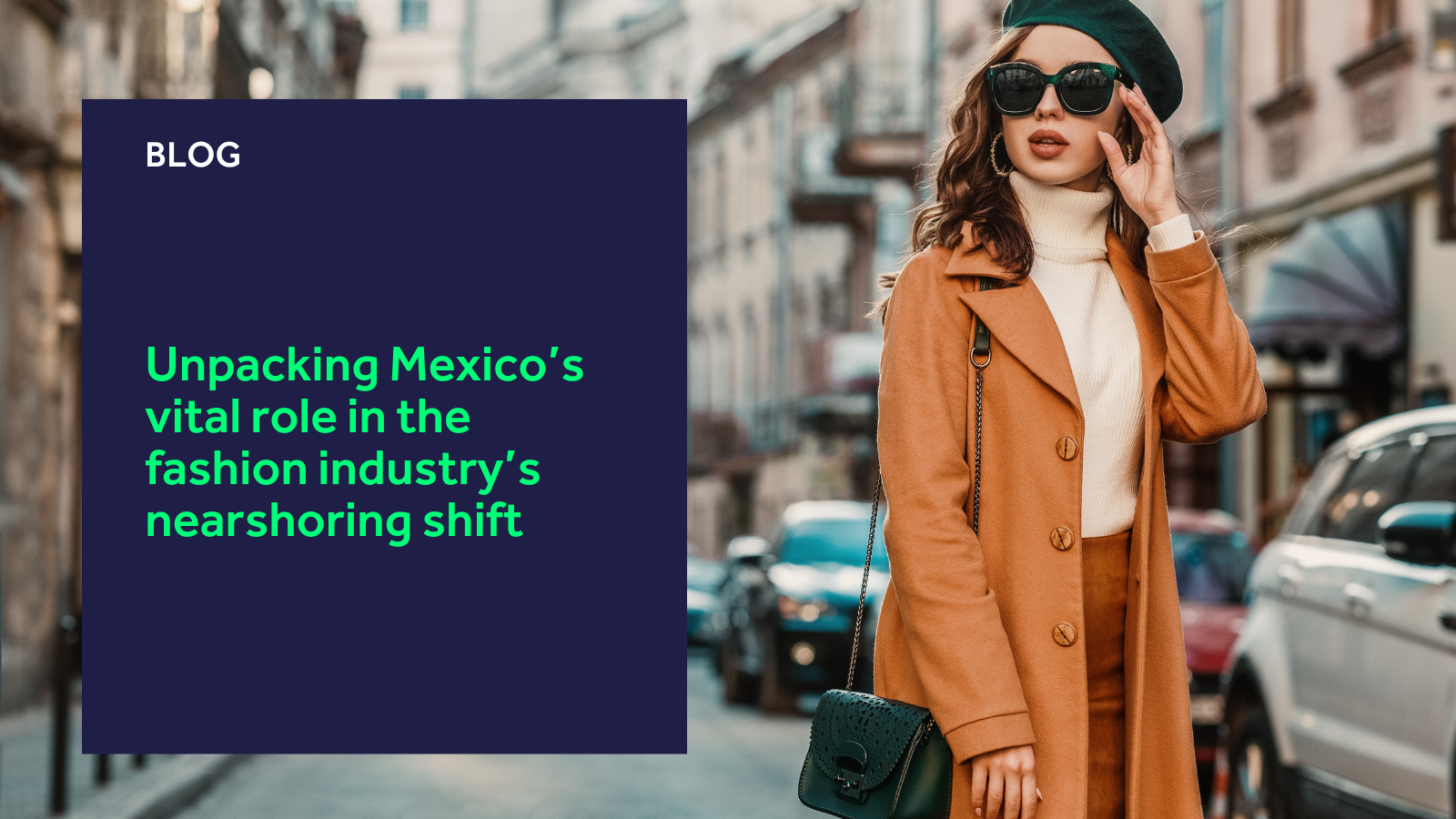Mexico’s meteoric rise up the nearshoring mountain has resulted in significant shifts within the fashion and apparel industry.
Nearshoring is a trend we’ve explored briefly before, but with demand for North American-made goods continuing to boom, we decided to dig deeper.
Here’s everything you need to know about the country’s vital role in the new fashion landscape.
What factors are driving brands to manufacture in Mexico?
Nearshoring refers to the relocation of a brand’s manufacturing and processes closer to its home shores, compared to offshoring where production is outsourced to remote countries with cheaper costs.
In recent history, offshoring has worked wonders for brands seeking cheaper manufacturing; however, global supply chain disruptions have highlighted fundamental flaws in the approach.
Mexico’s role in nearshoring is in part due to North American brands looking to reduce supply chain times and mitigate disruptions, but economic factors have also catalysed it.
U.S. tariffs on Chinese goods, disruptions caused by the pandemic, and logistical challenges like increased maritime transport costs have all arguably led to the shift in equal measure.
Mexico is a strategic destination for nearshoring due to its close proximity to the United States and Canada, which has helped to drastically shorten shipping times compared to Asian countries.
For instance, transporting goods from Mexico to the U.S. can take as little as two days, compared to up to 30 days from Asia, according to Mexico Business News. Not only does this slash logistics costs, but it also enables brands to respond quickly to market demands.
Another huge driver is the United States-Mexico-Canada Agreement (USMCA), which has further incentivised nearshoring by increasing regional value content requirements for products to be considered North American-made.
Naturally, the USMCA encourages companies to relocate their supply chains to Mexico to benefit from the trade advantages. Meanwhile, Mexico itself is poised for rapid growth.
Analysts predict that nearshoring could boost Mexico’s manufacturing exports by approximately $150 billion over the next five years. This growth is expected to contribute 3% to the country’s GDP in the same timeframe.
Reshaping the fabric of the fashion landscape
North American companies that continue bringing their supply chains back closer to home can expect several advantages, including reduced lead times and greater flexibility.
As mentioned above, the shorter distances between production sites and end markets allow brands to respond faster to market trends and consumer demands, enhancing their competitiveness.
In addition to the reduced transportation costs and agility, businesses can maintain better quality control over their goods. With production sites now located closer to home, brands no longer need to rely on third parties for inspections due to the high cost of travelling long distances. Instead, they can travel shorter distances and inspect the goods themselves.
All this coincidentally contributes to lesser environmental impacts, too, as less carbon emissions will be created from vehicles embarking on lengthy journeys.
While not necessarily the primary driver, this factor will appeal to brands wishing to align with the broader industry’s increased focus on sustainability.
It isn’t just operational benefits that appeal to brands either.
Nearshoring allows businesses to collaborate and engage in more flexible production models, like small-batch manufacturing and customisation, to cater to the growing demand for personalised goods.
Evidently, nearshoring could be transformative for some brands, though that isn’t to say offshoring doesn’t have its own merits, but some challenges remain.
New dynamics, same challenges
Despite the abundant opportunities nearshoring offers Mexico, manufacturers face some difficulties. One of the pervading challenges is the informal nature of the workforce.
Estimates suggest that the informal workforce accounts for approximately 55% of the total Mexican workforce, which could lead to instability and high turnover rates for fashion brands and manufacturers.
Furthermore, while Mexico offers competitive production costs, it must contend with infrastructure readiness and the availability of skilled labour, especially in high-demand regions like Monterrey and Juárez.
To complicate matters further, brands that have yet to establish their business in Mexico must understand the country’s complex regulatory landscape, which can change often.
Understanding and complying with Mexico’s legal, fiscal, trade and compliance rules are crucial for sustainable operations. Fortunately, there are solutions to these problems.
Fashion-focused solutions are key
Enterprise Resource Planning (ERP) solutions are vital to addressing these challenges and help streamline operations by integrating various processes into a single system.
For brands looking to nearshore in Mexico, ERPs enhance supply chain visibility, improve inventory management, and ensure compliance with local regulations.
ERPs also facilitate better workforce management by tracking labour availability and performance, which can help formalise the workforce and reduce turnover rates.
They also aid in managing procurement processes, ensuring that raw materials are sourced efficiently and cost-effectively.
Perhaps most importantly, ERPs enable manufacturers to make informed decisions, optimise production schedules, and maintain high-quality standards.
The only caveat is that most ERPs are generic in nature and do not support the nuances of fashion and apparel… which is where K3 Pebblestone comes into play.
K3 Pebblestone, fully embedded in Dynamics 365 Business Central, is designed to support brand owners, wholesalers, and CMT companies by streamlining mundane tasks, allowing them to return to doing what they love – fashion.
For example, the combined offering provides companies with enhanced control over manufacturing and production processes by integrating matrices, customising routings, and providing detailed journaling and planning capabilities to deliver accurate reports.
If you’d like to learn more about how K3 Pebblestone and D365 Business Central can help your business, feel free to drop us a line today.
 https://www.k3btg.com/wp-content/uploads/2024/03/K3-strengthens-global-market-position-blog-header.png
900
1600
Jordan Heal
https://www.k3btg.com/wp-content/uploads/2022/03/K3_Master_Colour_RGB.svg
Jordan Heal2024-03-11 10:58:242025-02-21 14:37:51K3 Fashion Portfolio strengthens global market position as Tony Bryant spearheads new role
https://www.k3btg.com/wp-content/uploads/2024/03/K3-strengthens-global-market-position-blog-header.png
900
1600
Jordan Heal
https://www.k3btg.com/wp-content/uploads/2022/03/K3_Master_Colour_RGB.svg
Jordan Heal2024-03-11 10:58:242025-02-21 14:37:51K3 Fashion Portfolio strengthens global market position as Tony Bryant spearheads new role

